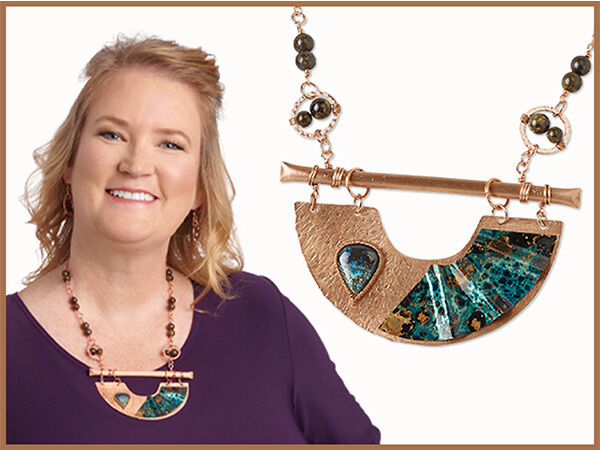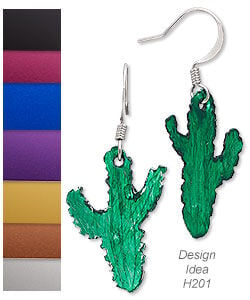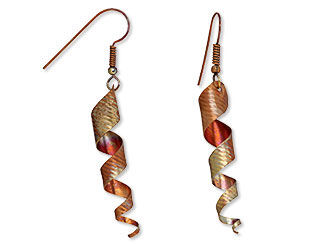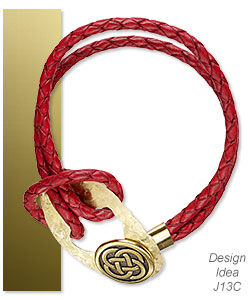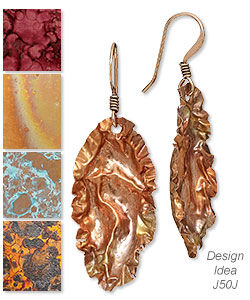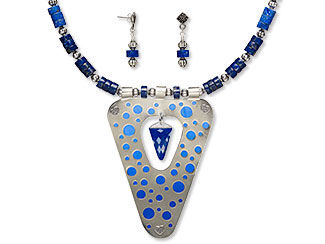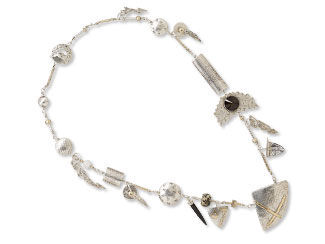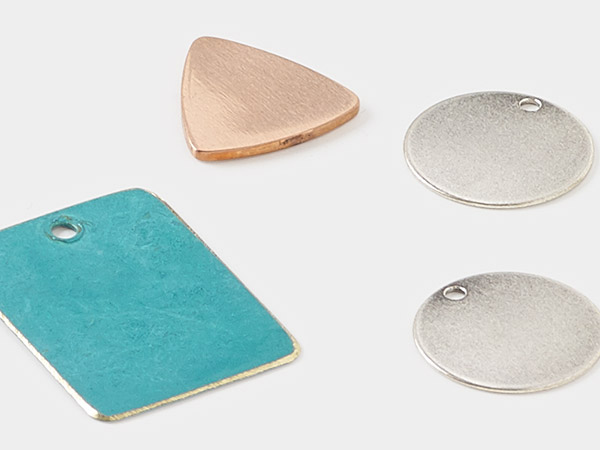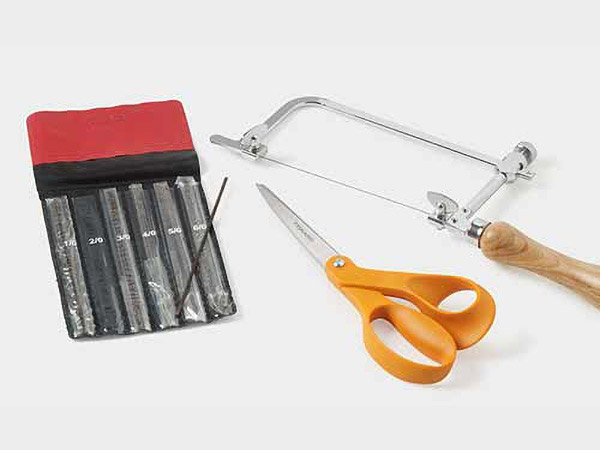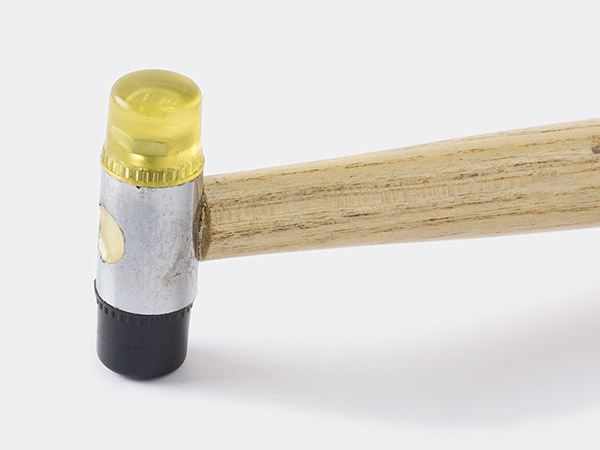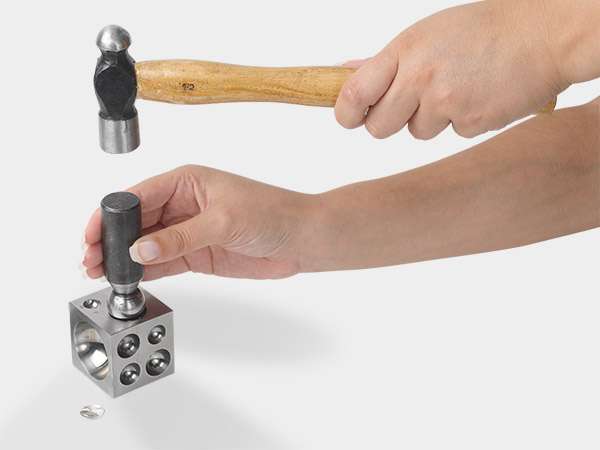All About Metal Sheet
by LeAlta Brummett, Design Idea K123
From cold connections to hot soldering, jewelry makers have been creating with metal sheet for millennia. Different metal types have different strengths, challenges and purposes. Let this article and the convenient chart below help you determine which metal type is right for your metalsmithing project. It can also indicate which type of metal sheet is right for your jewelry-making project with gauge, hardness, recommended uses and other information.
Aluminum (Anodized)
Lightweight, double-sided anodized aluminum sheet is malleable and easy to work with for creating sheet metal jewelry. Gently stamp or engrave to expose bright, corrosion-resistant aluminum underneath the colorful anodized surface. Due to the anodizing process, this sheet is not suitable for use with texturing hammers. Sheet edges are not anodized. Sheet comes with translucent protective film--remove film before using. Colors may vary from lot to lot.
Copper (Plain)
Red-orange copper is the first metal to be worked by human hands as it is soft and very malleable. This jewelry-making metal is an element in and of itself (Cu), and conducts both electricity and heat exceptionally well. Copper is commonly used in alloys such as brass, bronze, sterling silver, rose gold and more. It is a popular metal sheet for making stamped bracelet designs. The metal displays a range of patina, sometimes determined by the nature of the other metals in the alloy.
Embossed Brass
Ideal for cold connection designs, these pre-embossed brass sheets will save jewelry makers time. The pattern brass sheets for jewelry-making are easy to work with. Simply cut, bend or shape before attaching to other materials using rivets, brads, wire and other methods.
Jeweler's Bronze
Jeweler's bronze was designed by jewelers to look like high karat gold, without the price tag. It is easy to work--it can be cut using shears and embossed by hand or via machine.
Lillypilly Copper with Artistic Patinas
These Lillypilly copper sheets have been covered with an array of unique, vibrant artistic patinas, no two alike. Patinas are created using a combination of earth, fire and chemical processes--called the "Earth Burial" method--designed to mimic the natural effects of time on copper. They are ideal for a range of cold connection uses, as they should not be soldered. Tumbling can remove the patina, so great care should be used during polishing processes.
Nickel Silver
Nickel silver offers the look of silver without the price. Highly resistant to corrosion and tarnish--as well as being easy to solder--it is frequently used for jewelry, accessory and décor projects. Metal sensitive customers should avoid this material.
Sterling Silver
Sterling silver is an alloy that contains a mixture of 92.5% silver with 7.5% of another metal (usually copper). In order to be called sterling silver, the alloy must possess at least 92.5% pure silver. When mixed with copper, sterling silver will tarnish and may firescale. (Firescale is the industry term for a layer of oxidation which forms on the surface of alloys which contain copper when they are heated--such as during soldering--and may appear to be red or purple in color. It can only be removed by polishing. It can also be plated over.) These silver sheets for jewelry making accept antiquing.
Metal Sheet Chart
| Type of Sheet | Metal | Gauges Available | Hardness Available | Recommended Use | Notes |
.jpg)
Aluminum |
100% aluminum with anodized color |
20
26 |
not available | Suitable for cutting, milling, forming, punching etching and stamping. | A temporary protective film is placed on each side of the metal sheet to guard against fingerprints, scratches and other marks. Sheets anodized on both sides, color may vary from dye lot to dye lot. Edges are not anodized. |
.jpg)
Copper |
100% copper |
20
26 28 |
half-hard | Suitable for cutting, milling, forming, etching, punching, stamping, embossing and hard soldering | A temporary protective film is placed on each side of the metal sheet to guard against fingerprints, scratches and other marks |
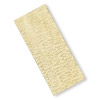
Embossed Brass |
brass (copper/zinc alloy) | 24 | not available | Cut using a disc cutter, metal shears, or jeweler's saw and shaped or worked using metalsmithing tools; use as texture plate for polymer clay, metal clay and other soft art materials. Suitable for hard soldering | Sheets are already embossed with patterns, including leaf, brushed, woodgrain, wavy line, oval, lined square, weave, lined diamond, reptile skin, cobblestone, shattered glass and triangle |
.jpg)
Jeweler's Bronze |
85% copper/15% zinc alloy |
18
22 24 26 28 |
half-hard | Suitable for cutting, milling, forming, etching, punching, stamping, embossing and hard soldering | A temporary protective film is placed on each side of the metal sheet to guard against fingerprints, scratches and other marks |
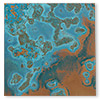
Lillypilly Patina |
100% copper with patinas |
24
36 |
not available | Suitable for cutting, riveting, bending and shaping; avoid soldering | Patina on 1 side only. Sheets come with a protective layer of wax. Tumbling may remove some color and patterning. Available in 12 different patinas. |
.jpg)
Nickel Silver |
copper/zinc/nickel alloy | 32 | half-hard | Suitable for cutting, milling, forming, etching, punching, stamping, embossing and hard soldering | A temporary protective film is placed on each side of the metal sheet to guard against fingerprints, scratches and other marks |
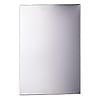
Sterling Silver |
.925 silver |
16
18 20 24 28 |
half-hard | Suitable for cutting, milling, forming, etching, punching, stamping, embossing and hard soldering | Can be used with the low fire Art Clay® line |
Shop for Your Materials Here:
Have a question regarding this project? Email Customer Service.
Copyright Permissions
All works of authorship (articles, videos, tutorials and other creative works) are from the Fire Mountain Gems and Beads® Collection, and permission to copy is granted for non-commercial educational purposes only. All other reproduction requires written permission. For more information, please email copyrightpermission@firemtn.com.
